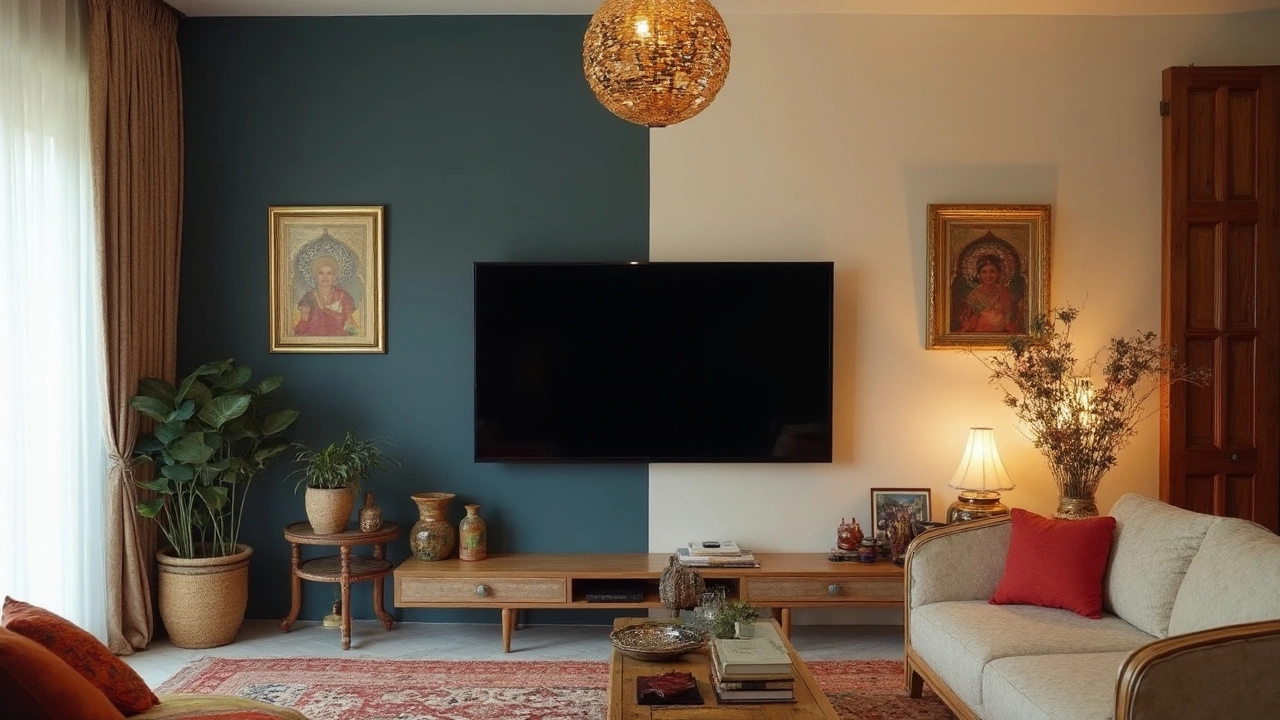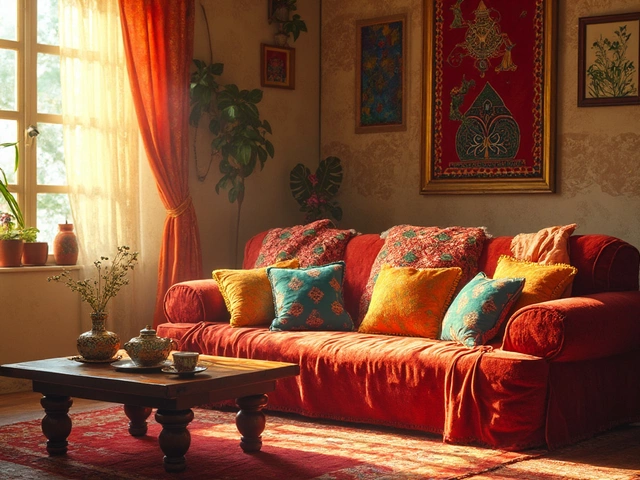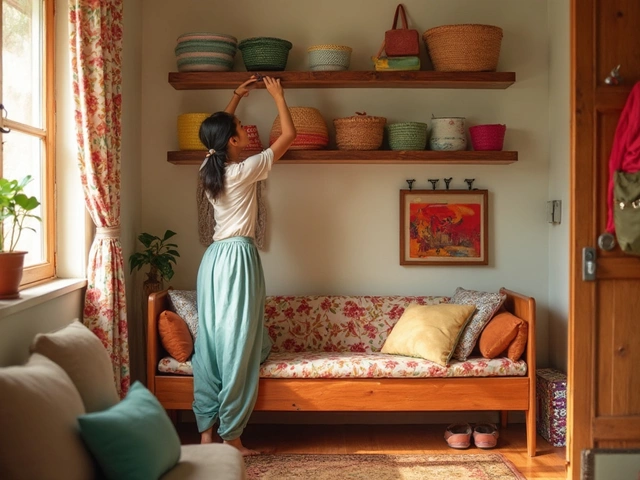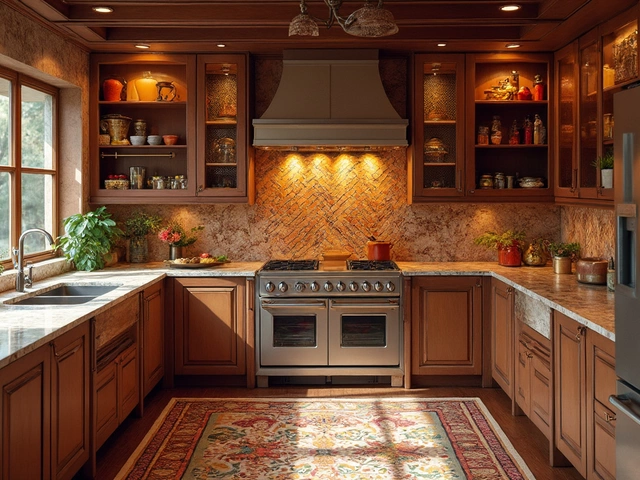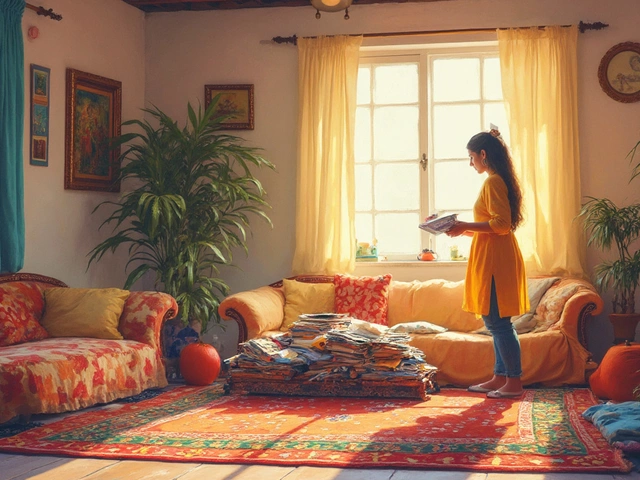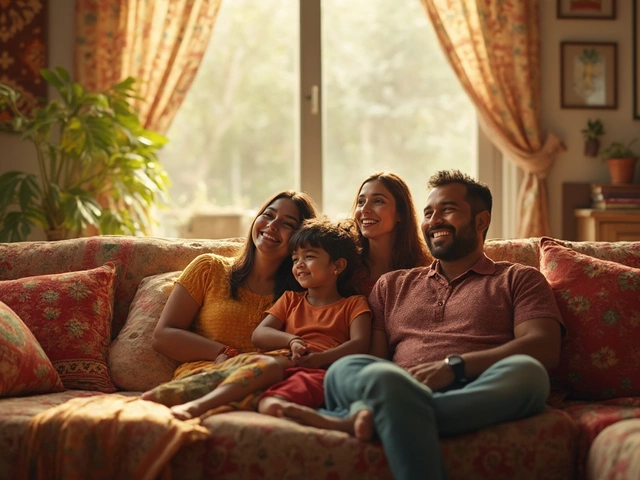Ever wonder if your TV wall should be dark or light? It's not just about aesthetics; it's about creating the perfect vibe in your living space. The color you choose can make or break your room's atmosphere and how your TV fits into the space. So, what's the deal with the color choice?
Dark walls can make your TV blend into the background, which is great if you want an uncluttered look. It's like the TV is just another piece of the wall art. Plus, it gives the room a more cozy, intimate feeling, especially if you've got dim lighting. On the other hand, if you've spent a small fortune on a sleek TV and want it to be a highlight, you might lean toward a light wall. It makes the screen stand out, almost like a digital painting in a gallery.
- The Impact of Wall Color on Screen Viewing
- Creating Ambiance with Light Colors
- Dark Walls for a Sleek Look
- Lighting and Eye Comfort
- Balancing Style and Functionality
- Practical Tips for Choosing the Right Shade
The Impact of Wall Color on Screen Viewing
Picking the right wall color behind your TV isn't just a matter of taste—it's about optimizing your screen viewing experience. The color you choose can dramatically affect how your TV looks and feels in your room.
Let's get into how a dark TV wall color can be a game changer. Dark walls can reduce glare and reflections on your TV screen, which is huge if you've got big windows or lots of ambient light. This means you can binge-watch your favorite series without getting distracted by annoying glare.
On the flip side, a light TV wall color can make your room feel more open and airy. It brightens up the space and can enhance perception of screen brightness, which might be ideal if you're into vibrant colors. However, a light background might also bring more attention to any dust or smudges on your screen, so be ready to keep it squeaky clean.
There's even some science behind this. According to a piece of data I found intriguing, when screens are surrounded by darker colors, it can help in focusing light and reducing eye strain. Alternatively, lighter colors can emphasize contrasts but might be overwhelming in bright conditions.
| Wall Color | Effect on Viewing | Best Used For |
|---|---|---|
| Dark | Reduces glare, blends TV | Rooms with too much natural light |
| Light | Enhances screen brightness | Smaller, less lit spaces |
So, when you're thinking about TV wall color, consider your room's brightness and your TV habits. Are you more of a daytime viewer or a night owl? This choice is more than just color preference—it's about finding that perfect harmony between practicality and style.
Creating Ambiance with Light Colors
Choosing light colors for your TV wall is like adding a splash of freshness and spaciousness to your room. Light shades, such as soft whites, pastels, or even muted grays, can make a room feel bigger and more inviting. They reflect more natural light, which can help brighten up spaces that might otherwise feel a bit cramped.
One amazing thing about using light colors is how adaptable they are. Whether you're going for a minimalist look or something cozy and lived-in, a lighter backdrop provides versatility. You can easily change accent pieces, like pillows or throws, and the wall will still match—no need for constant repainting.
Another cool thing about light walls is how they make your home decor pop. Artworks, photo frames, and other wall pieces tend to stand out against lighter shades, giving them more attention. Plus, with a light-colored wall, your TV itself can become a focal point when it's turned on, contrasting nicely with the wall while giving viewers an uncluttered and easy-on-the-eyes experience.
But it's not just about looks. Light walls can help reduce eye strain. Rooms with softer wall colors and good lighting—whether natural or artificial—provide a more comfortable viewing environment. That way, your eyes don’t work overtime adapting from screen brightness to the surroundings.
| Light Colors | Perceived Room Size | Natural Light Reflection |
|---|---|---|
| Light Grays | Enlarges | High |
| Soft Whites | Enlarges | Very High |
| Pastels | Moderate Enlargement | Moderate |
So, if you want a room that feels open, airy, and functional, reaching for that light paint or wallpaper might just do the trick. Just keep in mind the kind of atmosphere you want, and don't be afraid to experiment with different hues. Your living room might just thank you.
Dark Walls for a Sleek Look
Thinking about painting your TV wall a dark color? You’re onto something sleek and stylish. A dark wall can make your living space feel modern and edgy while also helping your TV blend seamlessly into the room. Imagine a wall that allows your screen to almost disappear when it’s off—even better for those late-night movie marathons where you want the focus on the film, not the hardware.
Dark walls, like charcoal or deep navy, provide an excellent backdrop. They can reduce glare by absorbing light, which is a bonus if your TV room gets a lot of natural daylight. Plus, these colors add depth to a room, making it feel bigger and more sophisticated. It’s like giving your living area the red carpet treatment without any of the fuss.
However, there’s more to it than just slapping on some paint. You need to think about lighting. Since dark walls absorb more light, you'll want some strategic lighting to prevent the room from feeling like a cave. This could mean adding accent lights or ensuring your ceiling lights are adjustable.
If you're worried about it feeling too dark, balance it with lighter furniture, throw pillows, or a bright rug. This can make your place feel inviting without losing that trendy vibe the dark walls bring in.
A word of advice: before you go all-in, consider painting a small section first. See how it interacts with your space over a few days, especially during different times of the day. That way, you can be sure it’s the right move for your style and room dynamics. Deciding between light and dark really comes down to the vibe you're aiming for and how your space works with those colors.
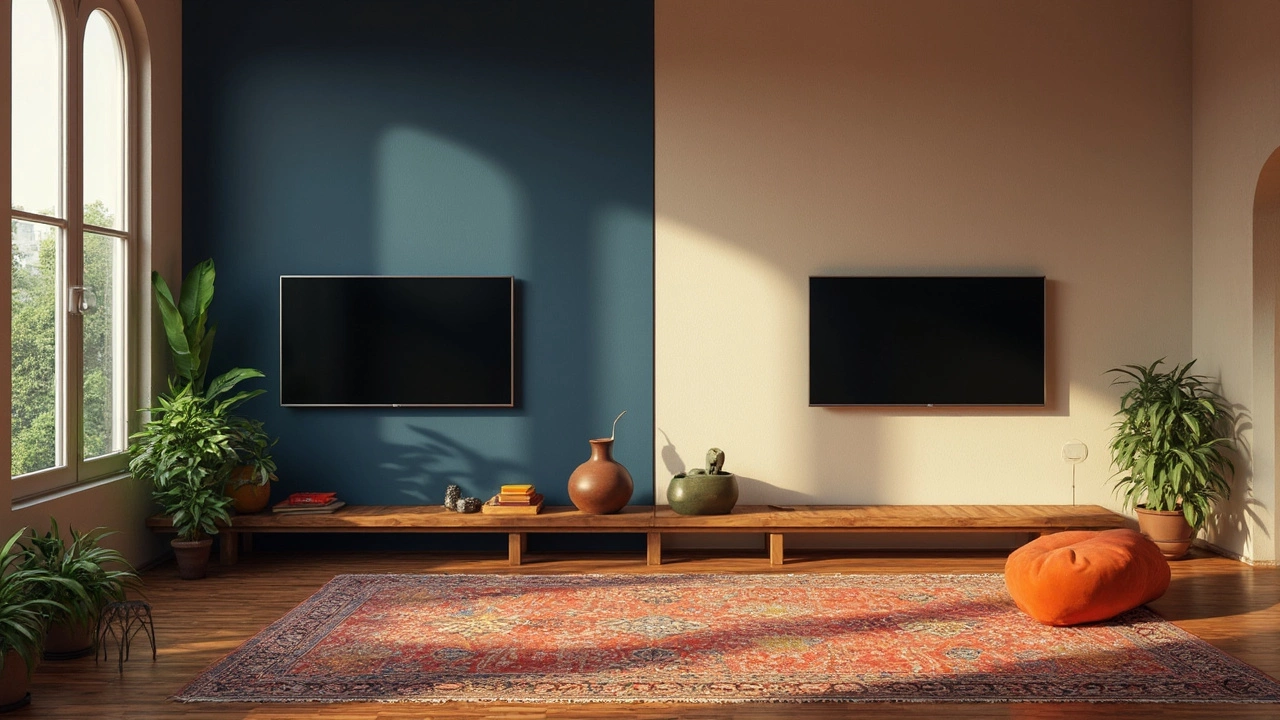
Lighting and Eye Comfort
When thinking about whether to go dark or light for your TV wall, lighting is a biggie. It's not just about how your room looks, but also about how comfy your eyes are while watching TV. Ever heard of eye strain? It happens when your eyes get tired from staring at screens, especially in a poorly lit room.
One solid tip is to use ambient lighting. It helps reduce contrast between the bright TV screen and the rest of the room. This can be as simple as some soft lamps or LED strips behind the TV that don't interfere with what's on the screen but still light up the room a bit. It's kind of like making sure there's no jarring difference that makes your eyes work overtime.
"A balanced lighting setup can greatly enhance viewing comfort by minimizing glare and reflections," says John Smith, a well-known lighting consultant at BrightVision Designs.
If you decide on a light-colored wall, make sure it doesn't cause glare by adding a dimmable light fixture. For dark walls, consider having a bit more ambient light, so your room doesn’t get too cave-like, which might sound cool but isn't the best for eye health.
- Try placing lamps on either side of your TV.
- Consider wall sconces for a more even light distribution.
- Look into bias lighting, which is placing a light strip behind the TV, to reduce eye fatigue.
Who knew picking the right color for your home decor could involve so much science? But once you get the lighting just right, both your eyes and your style sense will thank you.
Balancing Style and Functionality
Finding the sweet spot between style and practicality for your TV wall color might seem tricky, but it's totally doable. You want your living room to look great, sure, but you've also got to live in it, right? So, how do you balance these two?
First off, think about how often you actually watch TV. If it's a lot, you want something that's easy on the eyes for those movie marathons. Picking the right wall color isn't just about what's trendy; it's about making sure your space is comfy and functional. You wouldn't paint every wall in your kitchen fire-engine red, so why go wild in your living room?
Renowned interior designer Samantha Morris once said,
"A room should tell a story about who you are, and it also needs to be a place where you feel like you can be yourself."Picking a wall color for your TV that reflects your taste and caters to your viewing habits can hit that balance right on the mark.
Another thing to consider is lighting. Natural light changes how colors look, so what might seem cozy by lamp light could be overpowering during the day. Test some color samples on your wall. Spend a day seeing how they shift as the sun moves.
If you're a fan of the minimalist look, matching the color of your wall to your TV can help it blend in. However, if you're into more eclectic styles, you might choose a contrasting color that highlights the TV, making it a focal point.
- If your TV is mostly for background noise or occasional use, opt for a light neutral that can adapt to various light conditions.
- For a more cinematic experience, a darker wall can help reduce screen glare and create a theater vibe.
If you're not entirely sure about committing to a color, peel-and-stick wallpaper can be a game-changer. It's getting popular because you can test out a home decor style without making a lifetime vow.
Remember, your TV's just one part of the equation. It's really about how interior design complements your lifestyle. A color that ties the room together and matches your use makes every minute spent there feel like home sweet home.
Practical Tips for Choosing the Right Shade
Choosing the right color for your TV wall isn’t rocket science, but it does require some thought. First, consider the overall theme of your living space. Are you aiming for modern sophistication or a cozy retreat? Understanding your style helps narrow down the color choices.
Lighting is a game-changer, so pay attention to how much natural light your room gets. Darker shades can look stunning, but in a room with little natural light, they might make the place feel like a dungeon. In contrast, bright walls can open up a space, but if your room is sun-kissed all day, it might feel blinding.
The size of your TV matters too. If you've got a massive screen, a dark background can help the TV seem part of the room's art; a small TV against a dark wall might get swallowed up. For smaller screens, lighter walls can give a better balance.
- Experiment with paint samples. Apply different shades next to the TV and see which works best at various times of the day.
- If you're hesitant about committing, consider an accent wall. Paint just the wall where the TV sits and see how it feels.
- Don’t forget about texture. A bright wall can be made interesting with patterns or a matte finish, whereas a dark wall could benefit from a gloss to reflect a bit of light.
When in doubt, check out interior design magazines or websites for real-life examples. Seeing how others have designed their home decor might spark an idea. And remember, you’re not married to your choice forever—paint is one of the easiest things to change if you end up wanting something different.
